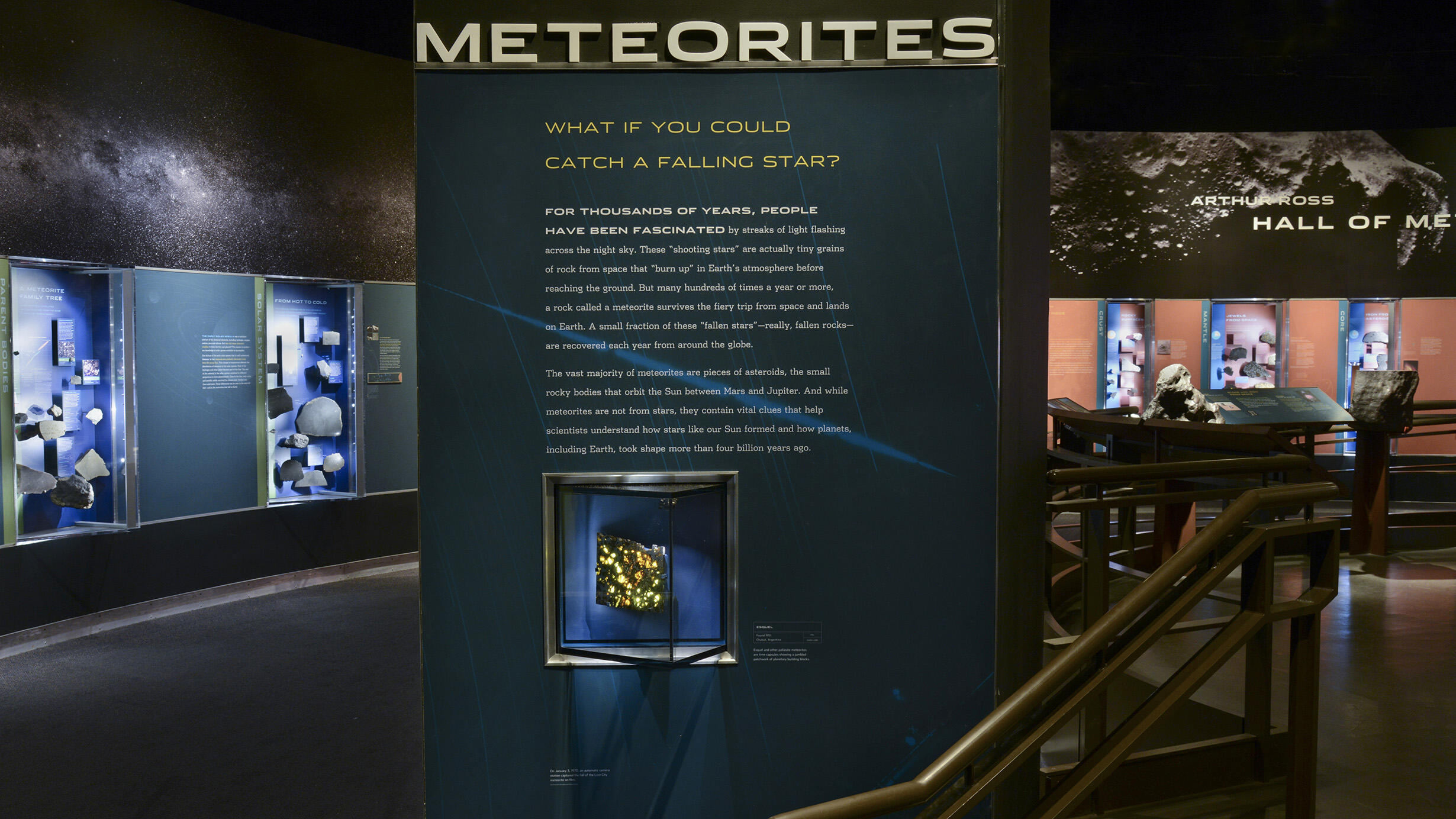Meteorites
Part of Hall of Meteorites.
 C. Chesek/©AMNH
C. Chesek/©AMNH What if You Could Catch a Falling Star?
For thousands of years, people have been fascinated by streaks of light flashing across the night sky. These "shooting stars" are actually tiny grains of dust from space that burn up in Earth's atmosphere before reaching the ground. But hundreds of times a year, a rock called a meteorite survives the fiery trip from space and lands on Earth. A small fraction of these "fallen stars"—really fallen rocks—are recovered each year from around the globe.
The vast majority of meteorites are pieces of asteroids, the small rocky bodies that orbit the Sun between Mars and Jupiter. And while meteorites are not from stars, they contain vital clues that help scientists understand how stars like our Sun formed and how planets, including Earth, took shape more than four billion years ago.
M. Shanley/©AMNH